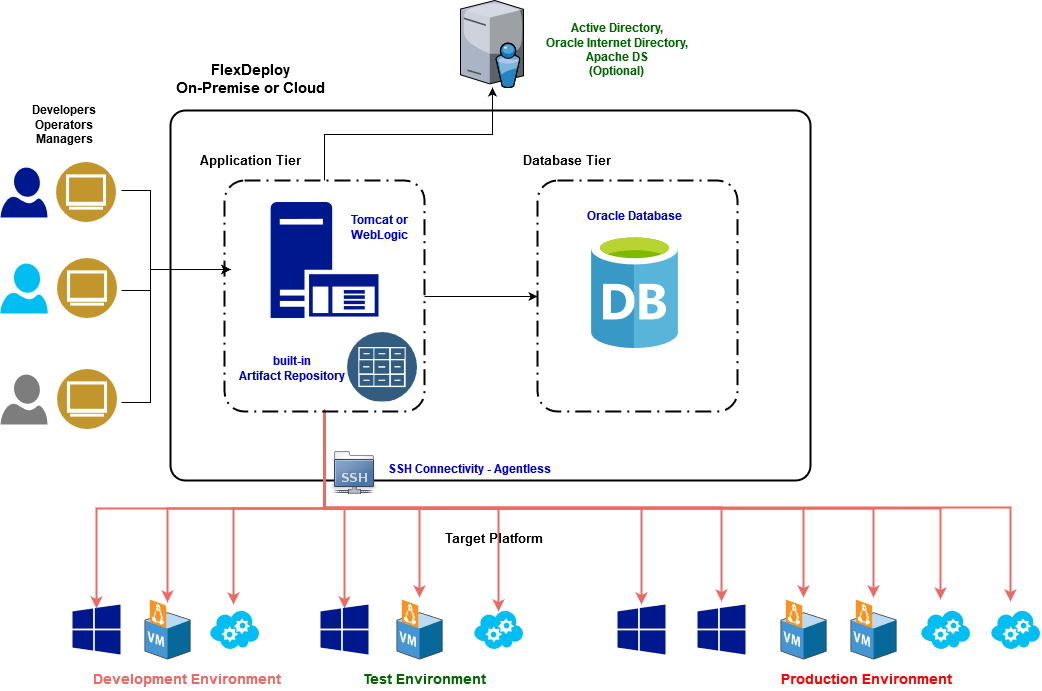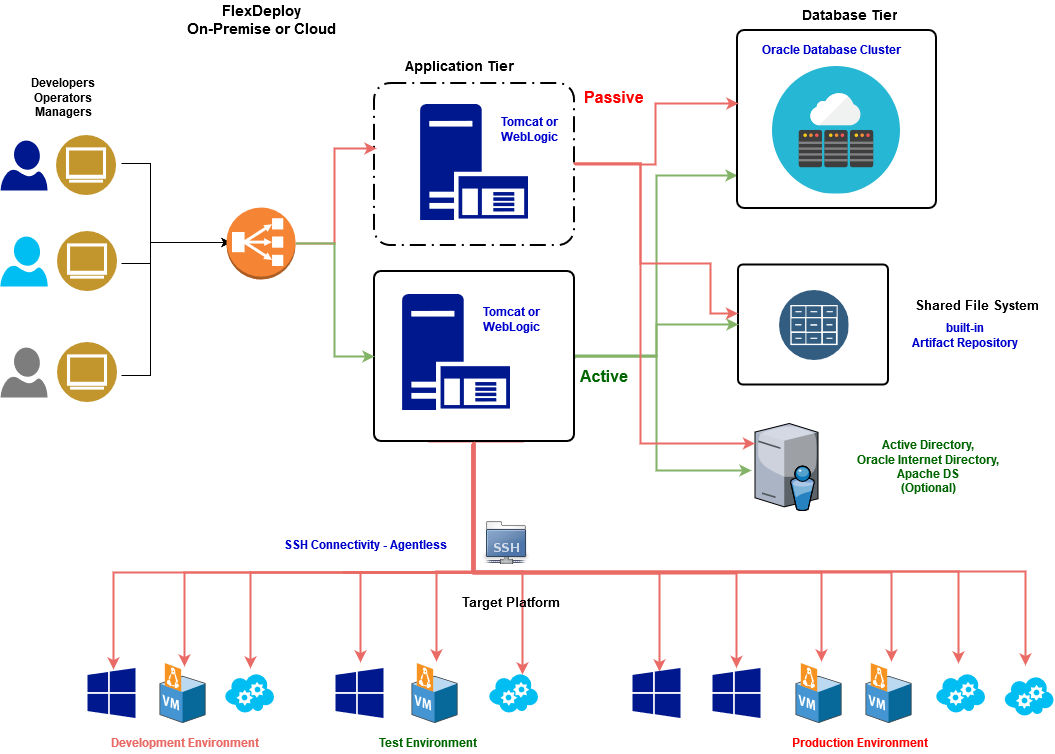FlexDeploy is a Java-based web application which requires an application server and an Oracle database.
- Tomcat and Oracle WebLogic application servers are supported. See details on FlexDeploy Installation Guide.
- Oracle Database is required for persistence of configuration and execution data.
Database Tier
FlexDeploy requires one of the following Oracle databases, and any required license is not included with your FlexDeploy subscription.
- Oracle XE, version 11.2 (although supported for production use, XE is generally used for trials and proof of concepts)
- Oracle Standard, version 11.2
- Oracle Enterprise, version 11.2
- Oracle Standard, version 12.1
- Oracle Enterprise, version 12.1
Application Tier
FlexDeploy requires one of the following application servers. You must install FlexDeploy on only one application server process.
- WebLogic 12.1.3 (license is not included with your FlexDeploy subscription)
- Tomcat 8.x
Platform Support
- Microsoft Windows
Unix/Linux (and its variants, such as Oracle Enterprise Linux, Red Hat, Solaris, etc.)
VM Image (ova) file with FlexDeploy is also available to quickly start trial of FlexDeploy. If you are interested in a FlexDeploy VM Image, please contact us through our website or download it here.
High Availability Considerations
Here are some guidelines on Active Passive configuration for FlexDeploy, as running more than one server process for FlexDeploy is not yet supported. You can choose to setup Cluster for Application or Database or Both.
- Install FlexDeploy application on two separate Physical Server or Virtual Machines.
- Setup RAC Database cluster for FlexDeploy.
- Make sure to use JDBC connect string for RAC cluster nodes.
- Use Shared File System for Artifact Repository directory. There is no need to setup Working directory on Shared File System.
- Configure Load Balancer to route all FlexDeploy users to Active Application Server.
- Make sure that only one of the Application Server process is running. This is absolutely necessary even when Load Balancer is routing traffic to only one of the server.
- This can be achieved by leaving out some configuration details on the Passive node. For example, you can omit Data Source configuration on Passive node, so that it does not start processing request if it is started by mistake.

